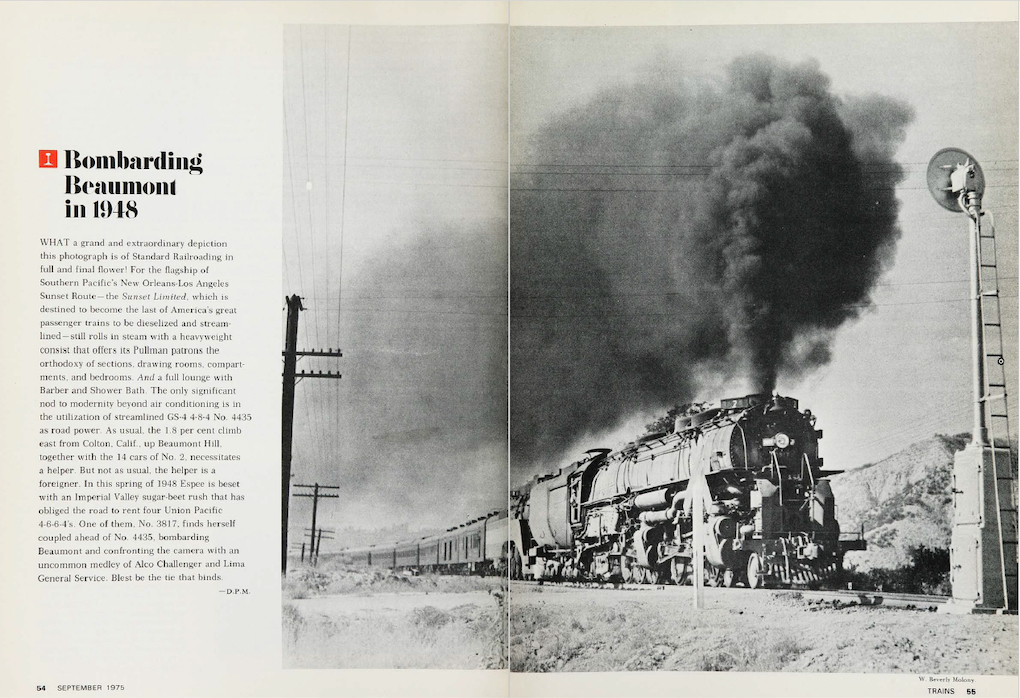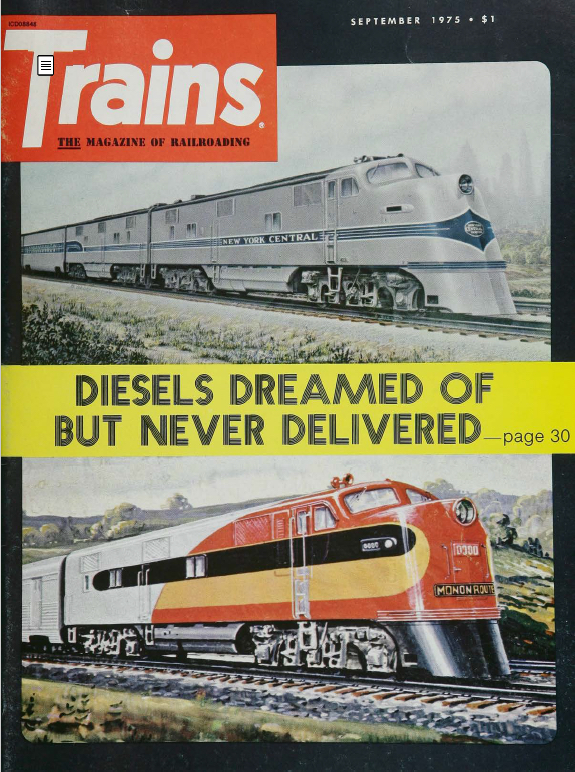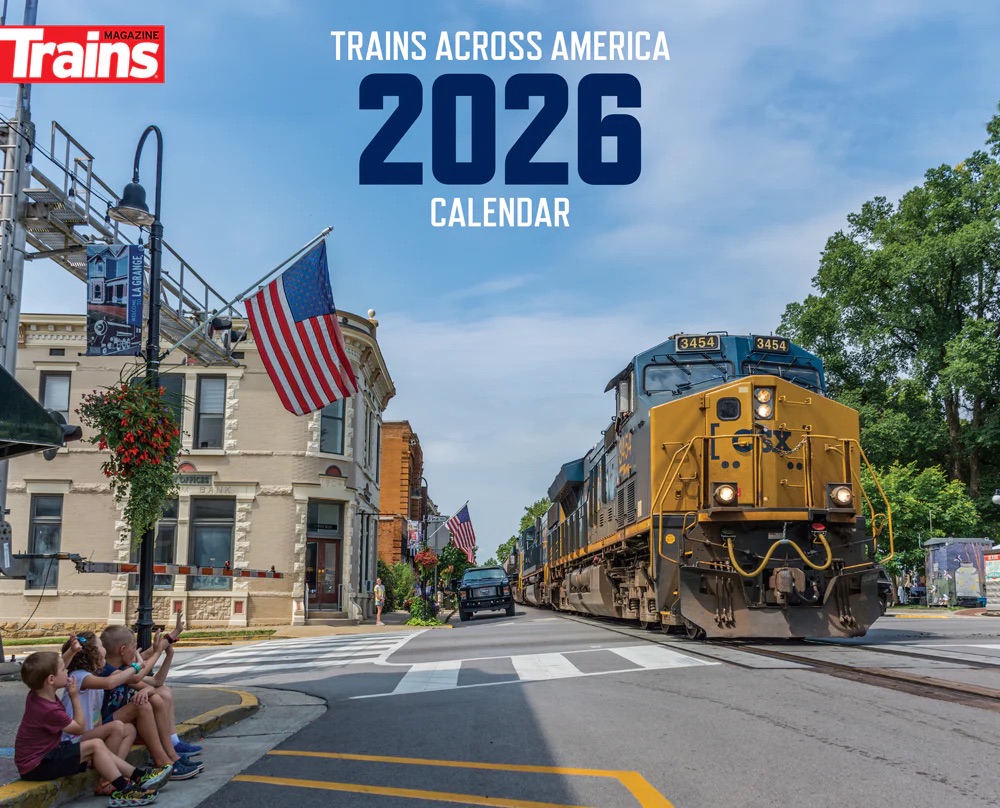
Walk around the halls of Baltimore’s B&O Railroad Museum and you will encounter many first, last, and only railroad objects. There is the William Mason, an 1856 4-4-0 steam locomotive that pulled Abraham Lincoln’s train as he snuck through Baltimore prior to his presidential inauguration. You will see B&O No. 51, an EMC EA, the first streamlined diesel locomotive. And, Central Railroad of New Jersey box-cab No. 1000, the first commercially successful diesel locomotive.
No. 1000, which rolled off the assembly line on October 23, 1925, was a product of General Electric, Alco, and Ingersoll-Rand. It weighed 60 tons and put out 37,200 pounds of tractive effort. The locomotive was designed as a switch engine and spent more than 30 years in the Bronx, N.Y., yards, where New York-bound B&O freight trains terminated.
At the time, steam was king on U.S. railroads and had been entrenched as the motive power for nearly a century. The idea that electricity could move trains was far fetched, except to one person: Thomas Edison.
Edison saw the possibilities held by electric propulsion as early as 1860. This idea was the basis of his all-electric train experimentation in 1880 at his Menlo Park, N.J., workshop. Edison’s ideas needed a boost — a mobile power source to eliminate the cost of installing an electrical transmission system. The answer came when Nicolaus Otto developed a successful internal combustion engine in 1876. The idea of pairing an internal combustion engine with electrical generation to power a mobile platform took hold … slowly … but it had put a dent in steam’s stronghold.
The diesel-electric railroad locomotive arrived at an opportune time in the 1920s. Steam power was labor intensive, dirty, and had expandability challenges. It would be discovered that the maintenance forces for diesel-electric locomotives were a fraction of those required for steam power. Coal created smoke and cinders, which many municipalities began to dislike. Additionally, the only significant steam power increases could be had through larger boilers, meaning additional weight that taxed railroad infrastructure.
“All of this — the pollution, the safety issues, the inability to scale to higher speeds and travel longer distances economically — led to a movement away from steam,” says Kris Hoellen, B&O Railroad Museum executive director in a conversation for locomotive builder Wabtec. “Most cities by that point had ordinances banning steam engines from entering their jurisdictions under their own power. That was true here in Baltimore, where the B&O Railroad would send out horses to meet and bring steam trains in. In fact, B&O maintained a large stable for this very purpose.”
Horses? Edison’s horsepower of a different color was slow to take hold on American railroads.
“Edison had always been intent on offering railroads a cleaner, more economical alternative to steam,” says Steve Gerbracht, director, Locomotive Architecture and Concept Development at Wabtec. “As the industrial uses of internal combustion engines took off, the light bulb literally turned on at GE that the locomotive, independent of catenary lines and third rails, could house its own power plant. Then, through the use of an alternator, the mechanical energy generated by the [internal combustion engine] — in this case a diesel engine — could be converted to electrical energy that could drive the traction motors on the train’s wheels.
“This marriage of the internal combustion engine with Edison’s arsenal of electrical components and propulsion equipment literally changed locomotive history.”
GE Demonstrator No. 9681 — CNJ No. 1000 — did yeoman’s work in the Bronx yard, and although noticed in the railroad community, its success did not spread quickly. Slowly the locomotive built a reputation for maneuverability and cost-effective operation. Other railroads took notice and began investing in this new power. The demands of World War II tipped the scales, with those roads that could order diesel-electric units doing so. The end of the steam era was not far off.
“If 1925 represents the ‘aha moment’ of uniting the [internal combustion engine] with an electric propulsion system, the last 100 years have been about optimizing that package for greater performance, i.e., lower emissions and higher traction, horsepower, reliability, and fuel efficiency,” says Bob Bremmer, Wabtec vice president of product development. “The success of this optimization journey … is a big reason the industry is celebrating this 100 year anniversary.”
The advancement of the diesel-electric power platform over the last century is staggering. Set aside what computer enhancements mean to modern locomotives and look purely at horsepower. CNJ No. 1000 produced a robust 300 hp. In the last century, locomotives reaching 6,000 hp have moved trains on U.S. rails.
Now that is a century of progress.
The CNJ No. 1000 is on display at the B&O Railroad Museum in Baltimore, Md. Visit the museum’s website for more information.













